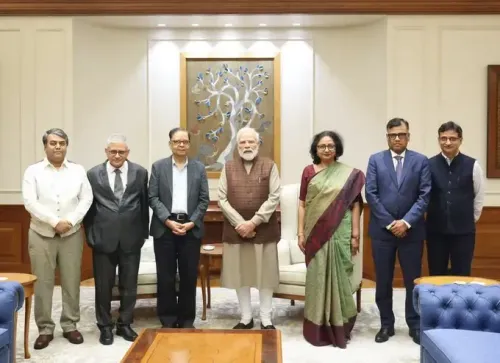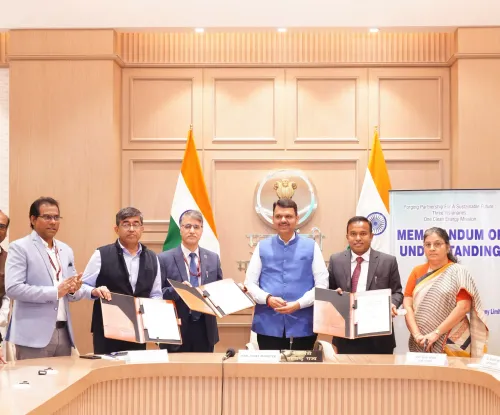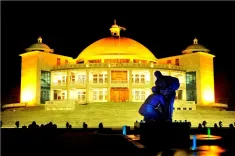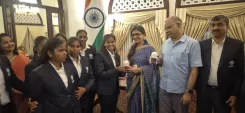What Steps Are Being Taken to Enhance India's Human Spaceflight Program?
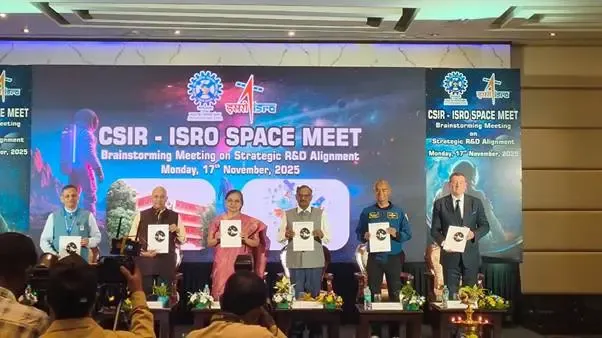
Synopsis
Key Takeaways
- Collaboration between CSIR and ISRO is essential for India's human spaceflight goals.
- The meet emphasized indigenous innovation and international cooperation.
- Long-term objectives include missions to the Moon and Mars.
- Insights from experienced astronauts highlight the importance of training and operational readiness.
- Future efforts will focus on enhancing safety systems and life-support technologies.
New Delhi, Nov 17 (NationPress) The Council of Scientific and Industrial Research (CSIR) along with the Indian Space Research Organisation (ISRO) convened the CSIR–ISRO Space Meet 2025 in Bengaluru on Monday to synchronize multidisciplinary research, technology advancements, and institutional partnerships essential for India's human spaceflight initiatives.
This event was hosted by CSIR-National Aerospace Laboratories (CSIR–NAL), which served as the central organizing body.
During the meeting, Dr. N. Kalaiselvi, Secretary of DSIR and Director General of CSIR, elaborated on CSIR’s scientific and technological efforts aimed at enhancing India’s space capabilities. She remarked that the meeting would facilitate significant exchanges of knowledge among scientists, researchers, astronauts, and global experts, addressing existing gaps.
She underscored India’s dedication to indigenous innovation and collaborative research and development, while praising the leadership of Union Minister Dr. Jitendra Singh in pushing forward national scientific and technological objectives.
On the other hand, Dr. V. Narayanan, Secretary of the Department of Space (DoS) and Chairman of ISRO, stated that the Gaganyaan space program necessitates collaboration among various ministries, research institutions, academia, and partner organizations.
He shared insights on emerging mission priorities, such as next-generation crew safety systems, advanced life-support technologies, and the development of scientific payloads.
Dr. Narayanan also acknowledged the contributions of CSIR and India’s national R&D ecosystem, referring to long-term aspirations like a human mission to the Moon, Mars exploration, and the establishment of an Indian Space Station.
During the experience-sharing segments, Group Captain Prasanth B. Nair, an ISRO Astronaut, shared experiences from astronaut training, microgravity simulations, and operational readiness. Wing Commander Rakesh Sharma (Retd.), India’s first astronaut, reminisced about his 1984 Soyuz mission, commending the enduring contributions of NAL to the aerospace sector.
Both astronauts highlighted that the Indian Human Spaceflight Programme is directed towards peaceful exploration and human-centric research.
Technical and thematic sessions included talks by both national and international experts, such as Dr. Lucia Roccaro from ESA discussing human spaceflight physiology, Dr. Akiko Otsuka from JAXA on collaborative research, and Prof. Pradipta Biswas from IISc on human-technology interaction and interface design for crewed missions.
The meeting wrapped up with a unified commitment to enhance science-technology integration, mission-oriented R&D, and multi-agency collaboration to propel India’s human spaceflight agenda, in line with the national vision for a Viksit Bharat.

